Let’s take a trip back 70 years to 1954, when The Pavilion Theatre on Weymouth Pier was destroyed in a devastating fire.
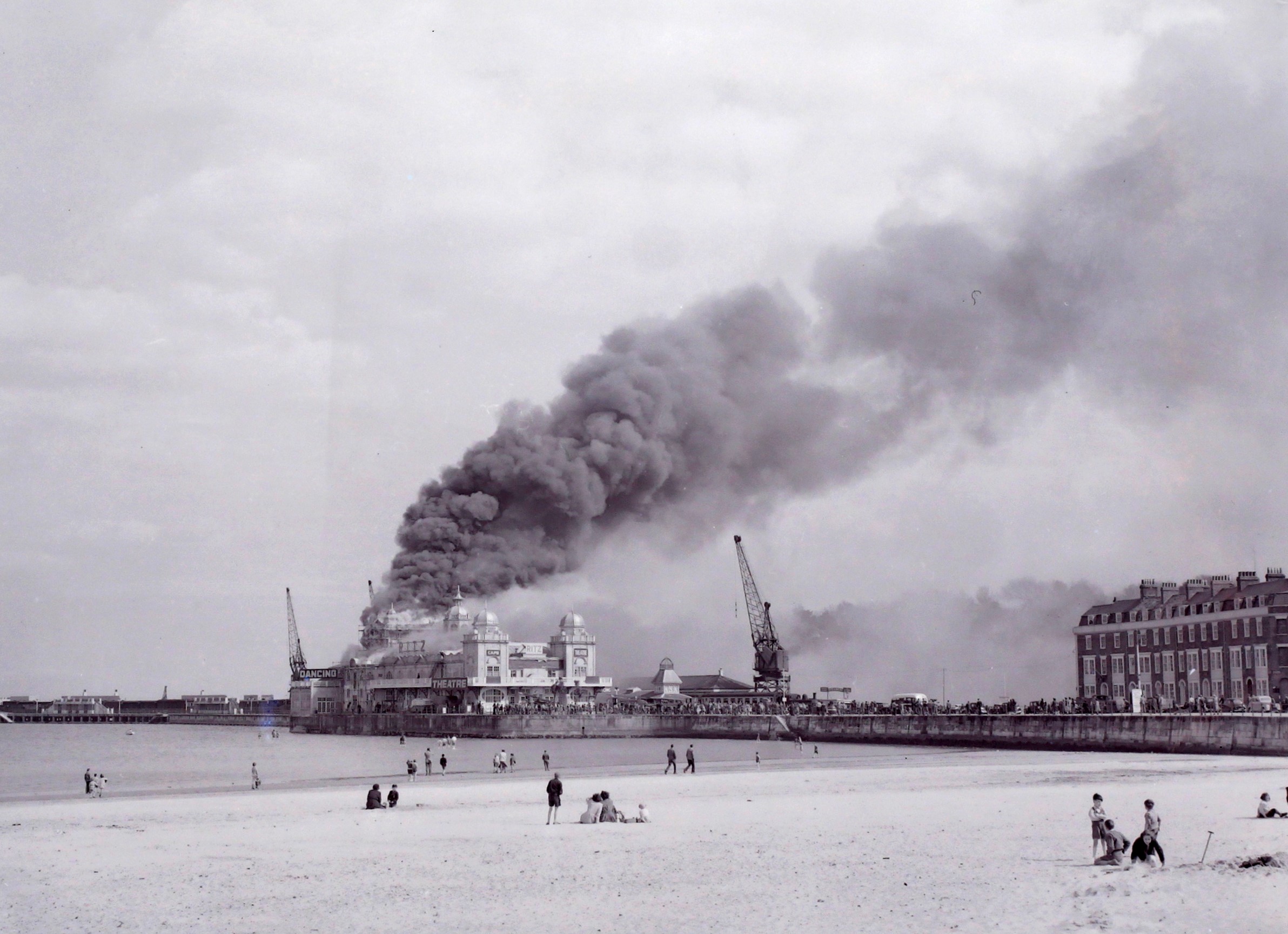
History
Sat in a prime position in Weymouth Harbour, The Pavilion opened on 21st December 1908, offering locals and tourists a go-to spot for performances. Over the years, it evolved from hosting lively pantomimes and traveling shows to doubling as a cinema during the cinematic boom of the 1930s.
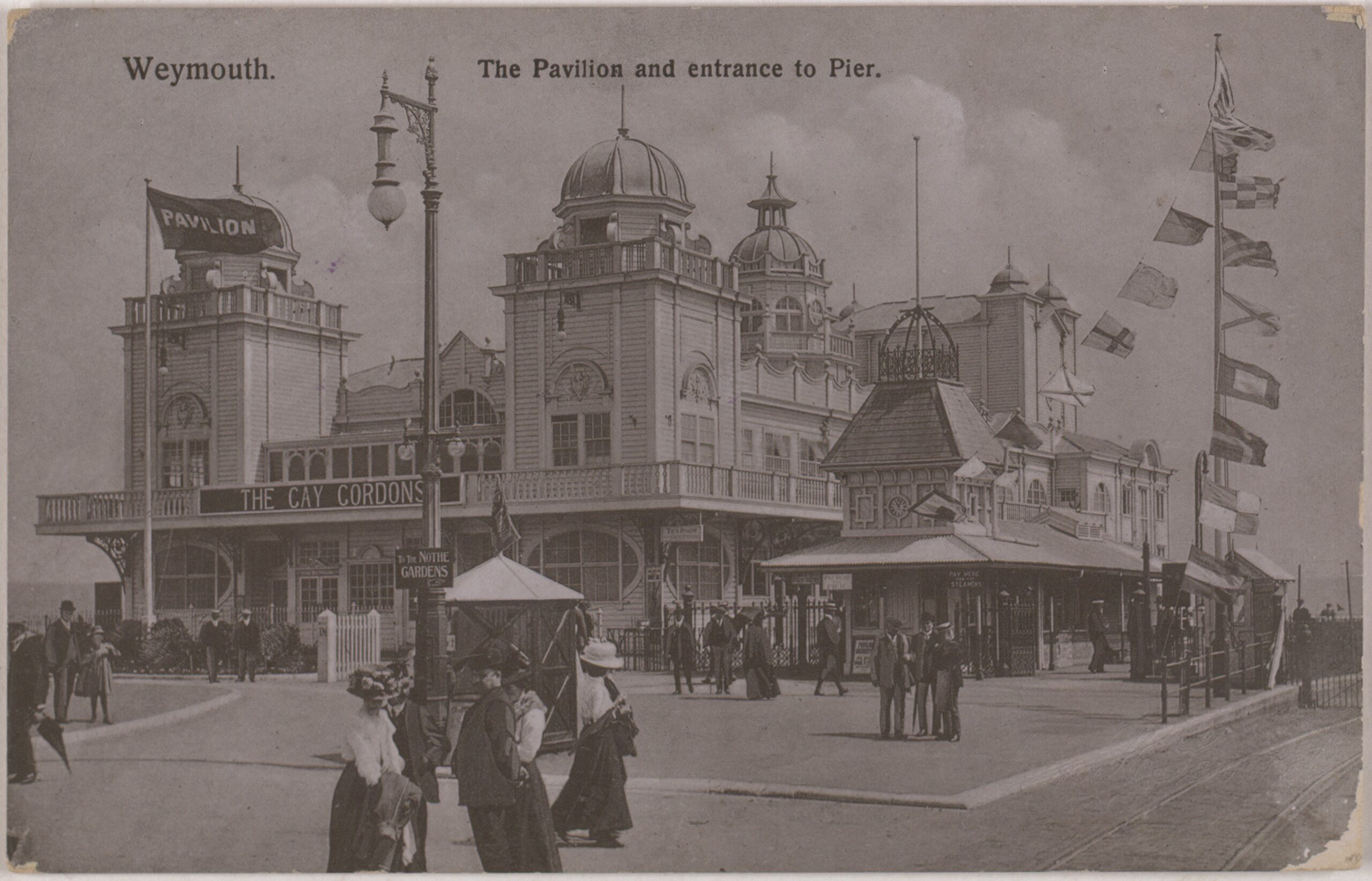
However, the Pavilion’s resilience was tested during World War II, when it sustained damage from air raids that necessitated extensive repairs. Reopening its doors as The Ritz in 1950, the theatre faced further challenges with ongoing renovation works. These works ultimately lead to its downfall.
Inferno
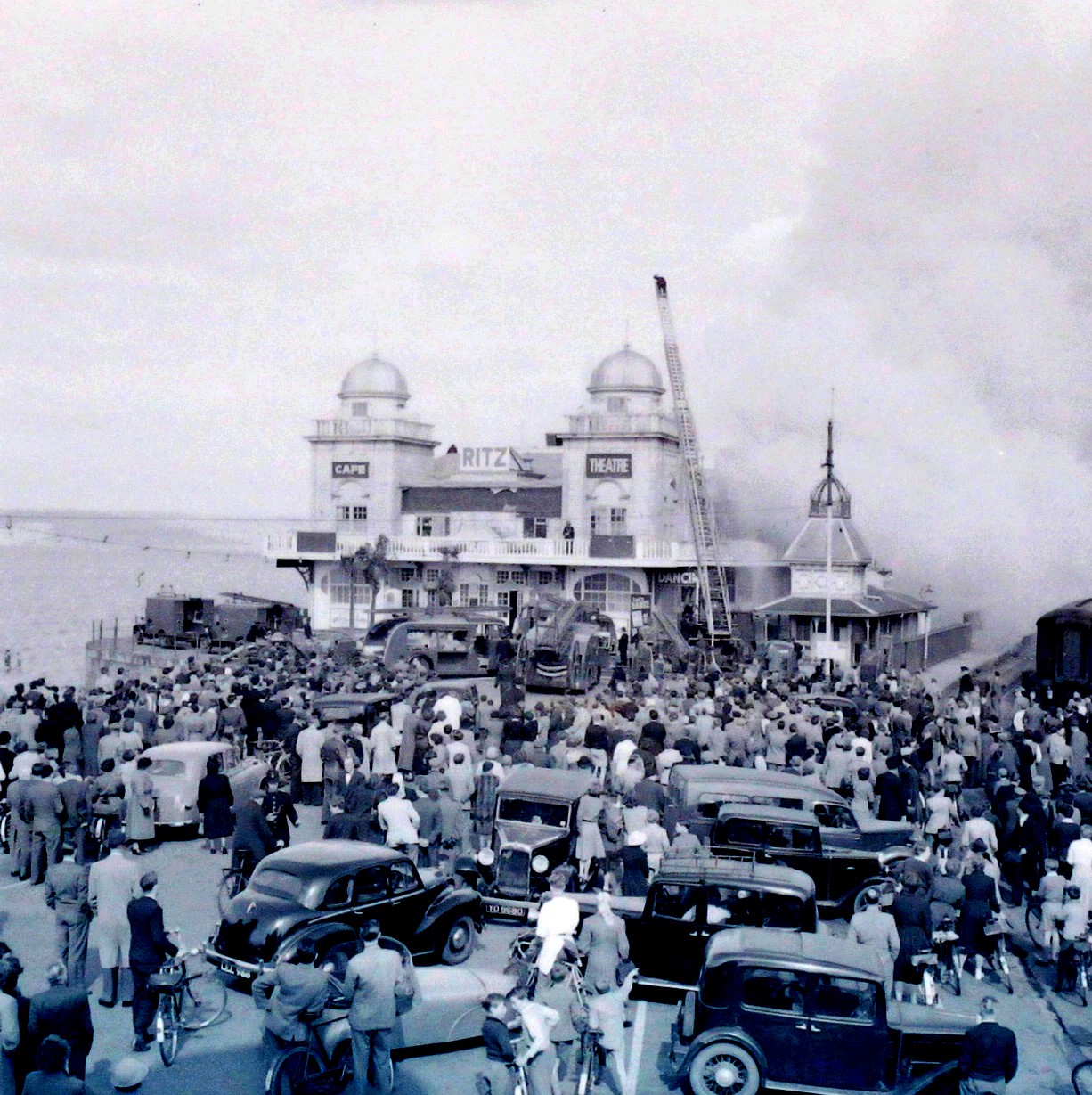
On 13th April 1954, fire engulfed the theatre. Being a wooden structure, the inferno was well fuelled and much of the building was destroyed. A huge crowd gathered outside as the firefighters worked to put out the flames. Among the onlookers was local commercial photographer Graham Herbert, who swiftly arrived on the scene, his camera capturing shocking photographs of smoke billowing from the theatre.
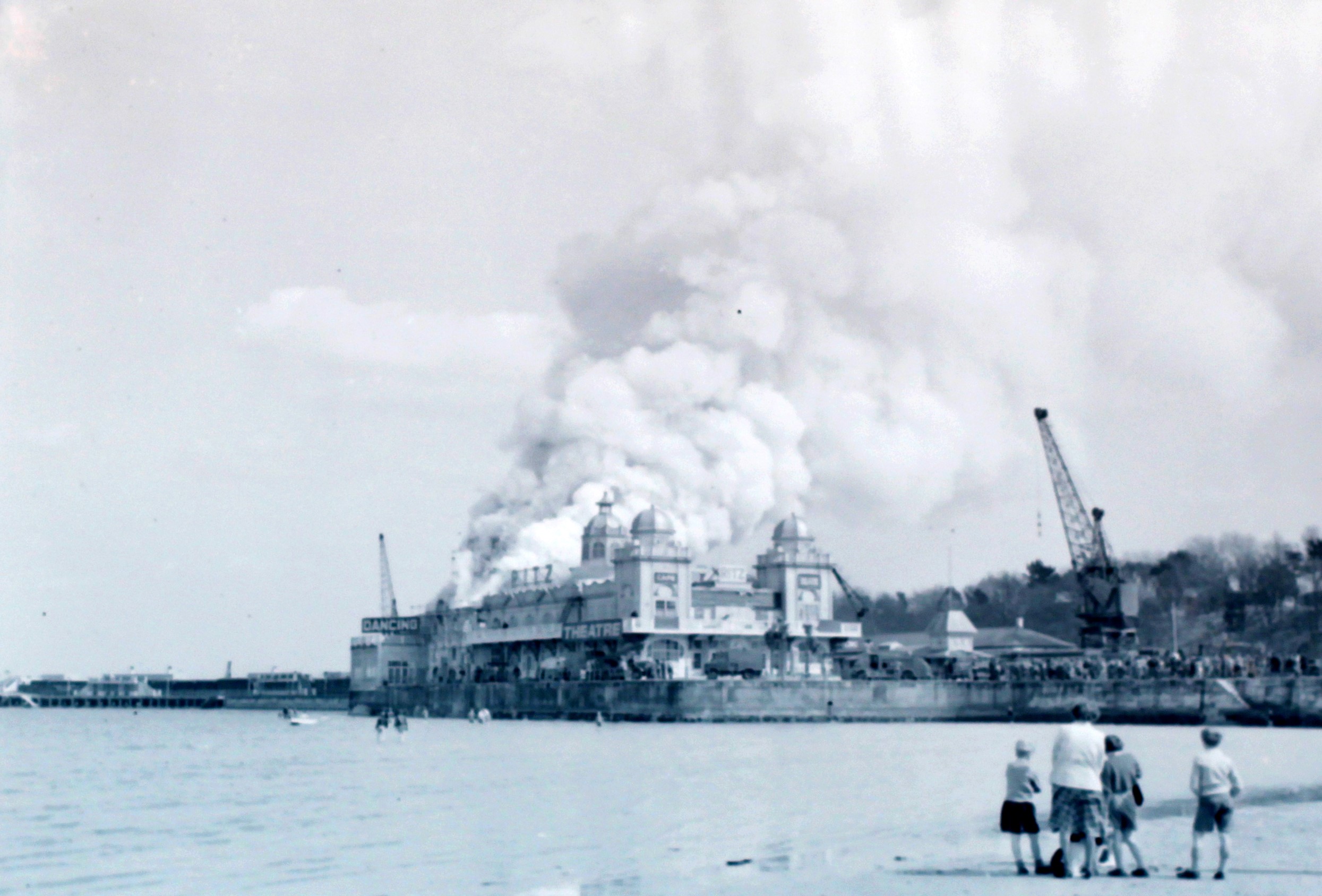
Aftermath
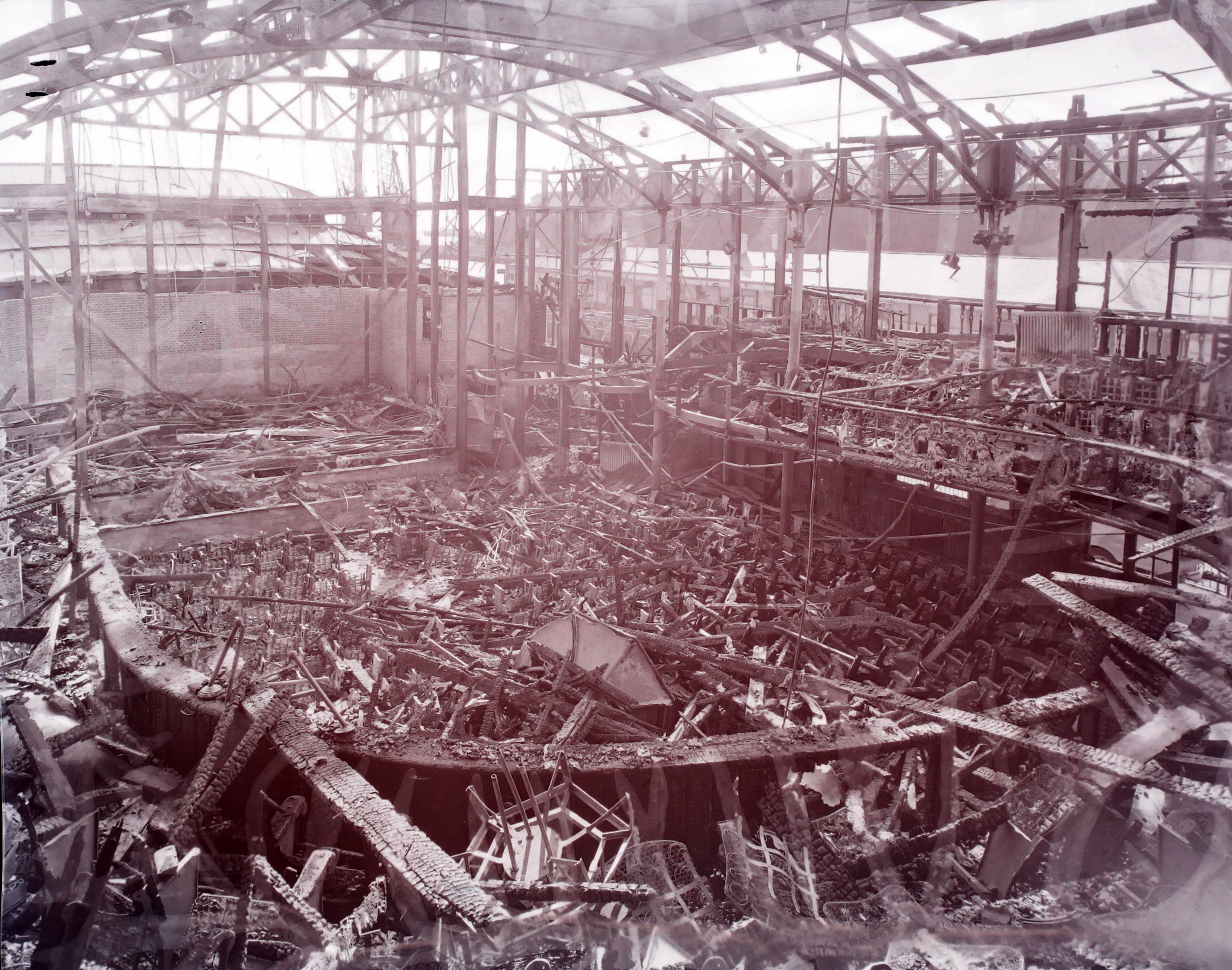
Graham was given access to the interior a few days later and through his photographs we can see how extensive the damage was. Charred stalls are hidden under the rubble of the collapsed roof, and the stage is non-existent. It was later discovered that the fire was caused by a blow lamp which was being used to strip paint from the exterior during the renovation work.
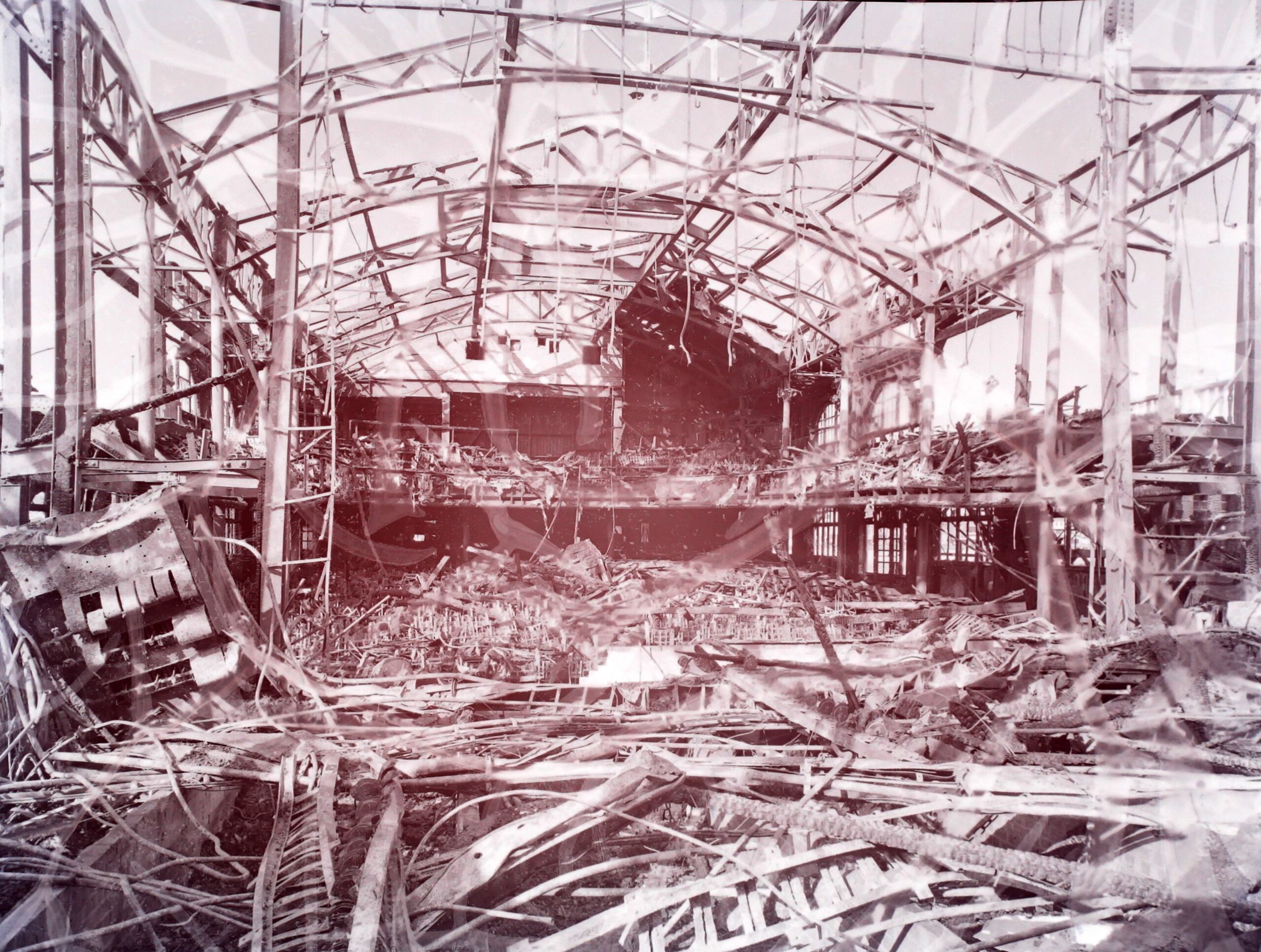
The remaining structure was removed. The theatre was rebuilt and opening in 1960. They decided to return to the original name The Pavilion, and the theatre still stands on Weymouth seafront today.
Vinegar Syndrome
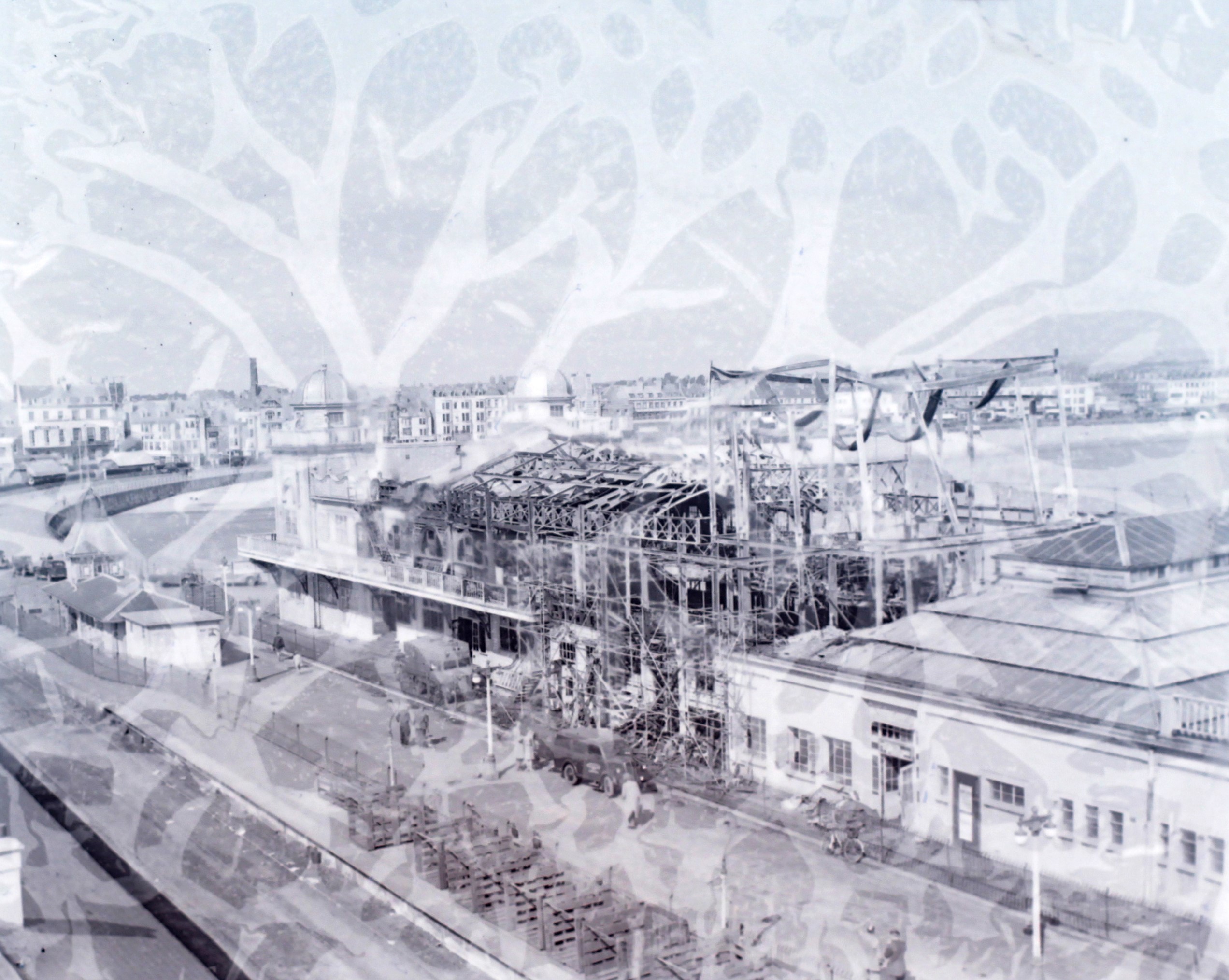
You may notice that some of the photographs featured here have veins, or channels, running across the image. This is caused by acetic acid syndrome, a deterioration that can affect photographic negatives. It is also known as vinegar syndrome because, well, it smells like vinegar! Sadly, this syndrome affected the whole Graham Herbert collection, and once it starts, there’s no way to stop the degradation. Thankfully through generous support and lots of fundraising, we were able to digitise the collection in 2017 and save these photographs, and their stories, for future generations.
You can search the index for the Herbert Collection on our catalogue, here: https://archive-catalogue.dorsetcouncil.gov.uk/records/D-HBT You can’t see the images online, but if you would like to view any photographs in the collection, get in touch on archives@dorsetcouncil.gov.uk

